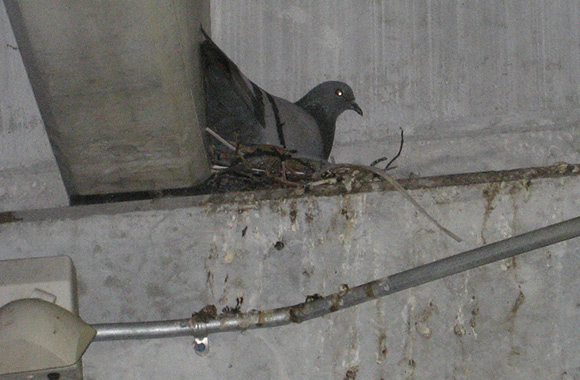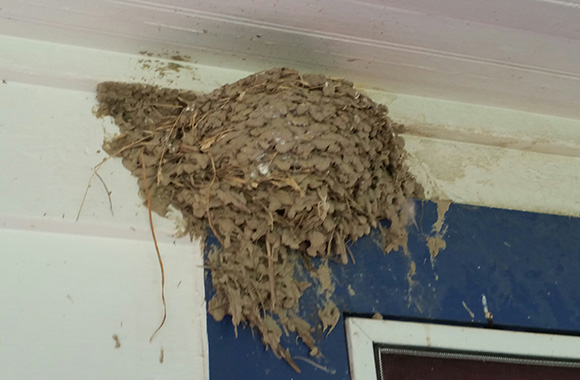How to get rid of bird nests
There are not many pest issues that are so hard to deal with than bird nests. Considering that there are so many places that birds can use to build nests, there are often discovered only when they begin to cause problems for home owners. Additionally, many species of birds are protected by law, and removing nests during the period I which birds lay eggs and nurture their young is illegal. This means that you could suffer serious legal consequences from disturbing bird nests if you are not informed enough. There are, however, methods to get rid of bird nests that are legal and will not cause you any trouble.


Depending on the species of the bird, you may or may not be allowed to remove nests during certain periods of the year. If you are experiencing problems with bird nests, the first thing you must do is learn as much as you can about the species and its life cycle. If the bird is protected by law, chances are that you are going to wait for some time before you are allowed to remove the nest. If the bird hasn’t laid any eggs yet, and if they haven’t yet hatched, it could be enough for you to wait for the bird to leave the nest. After the bird leaves the nest, you can proceed to remove it. If, however, there are eggs present in the nest, you might have to wait until all the birds leave the nest before you remove it. If you are certain that you are legally allowed to remove the nest, you can begin with the initial steps.
The way in which you are going to remove the nest strongly depends on the type of the nest and its location. First things first, there are many spots that birds can use to build nests. Some bird species prefer chimney flues, while other place their nest in soffits, trees and even roof tops. As you can already assume, removing the nest will require different methods and tools depending on its location. Most often, to remove a nest, you are going to need a ladder, any type of a long tool that will allow you to reach the nest and knock it down, some plastic bags to place the nest in, gloves and a breathing mask. Since safety and health comes first, you should only attempt to climb hard-to-reach areas such as a roof top or a chimney flue if the infrastructure is stable and sturdy. You also shouldn’t do this by yourself, it would be the best to have someone to help you along the way.
You should always protect yourself using gloves and a face mask. Bird feces is extremely unsanitary. It is dangerous to come in contact with, either by touching or breathing in. Bird feces can contain large amounts of bacteria, viruses and fungus. For this reason, protecting yourself from harm is not too much.
When you have all your tools gathered, proceed to assess the type of a nest you are dealing with. There are different types of nests that are made of many different materials. If nests themselves are not sturdy enough, it will not be enough to simply knock them down. You may have to remove remain nest material from your walls, spouts and from the inside of your chimney. Even if you remove the majority of a nest and leave additional remains behind, it is possible for the area to absorb moist or pose a fire hazard. For this reason, your job is not done until you are absolutely certain that you have removed the entire nest.
In addition to clogging chimneys, bird nests can clog water spouts as well. If you are removing a nest from these areas, you might have to do some additional cleaning afterwards. Clean the area by scraping the remains of the nest with a spatula and pulling it out. If you are cleaning a spout, make sure to test it by running water through it. In case you are cleaning a chimney, you should check and see if you can see the light coming from the top of it while looking up from the inside of your house.

Before you even think about touching the bird's nest that you’ve found in your garden or on your property, you’re going to want to know two things: the status of the nest, and the species of the bird. Many birds are federally protected in the United States. It is (sometimes) an offence to move the nest of a bird that is protected when it's in use. If the nest is not yet abandoned, there’s a chance you won’t be legally allowed to move it. If you can’t be sure the nest is inactive, call in a wildlife removal expert that deals with birds. Local rehabilitators and animal organisations can also sometimes help.
If you can be sure that the nest is empty and not in use, you can go ahead and remove it. It is recommended that you proceed with caution, using protective equipment. Mites, disease-causing pathogens, and other nasty bugs could still be actively lurking.
Different birds will build different types of nest, so you may need to scrape, scrub, or otherwise forcibly remove part of the nest, which could damage your property in the process. You will need to be prepared for repairs.
Nest material will need to be disposed of in a responsible manner, once again considering the potentially dangerous pathogens. Dampening the material can help to prevent the spread of potentially airborne particles, and you will need to securely seal the package of waste. Ideally, that waste will need to be incinerated.

